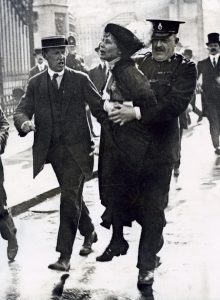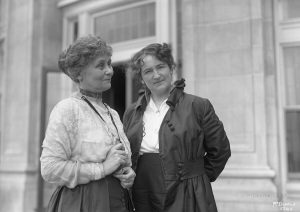3.2 Expanding Voting Rights
In Canada, early election rules varied by colony, but property restrictions were common. In most provinces, only men who owned a given amount of property were eligible to vote.
Several jurisdictions also imposed religious requirements. Catholics, Jews, and Quakers were among the religious groups barred from voting (Courtney, 2020). After Confederation, voting requirements were determined within each province, but most restricted voting to British male property owners who were over 21 (Courtney, 2020).
Historical Barriers to Voting in Canada
- Racial Barriers: Indigenous people in Canada were banned from voting. Black Canadians have formal voting rights, but they were subject to discrimination, and they were effectively barred from voting by economic barriers (Courtney, 2020).
- Economic Barriers: Requirements that voters own property were designed to exclude the poor from voting (McRae, 2019).
- Religious Barriers: Quakers, Catholics, Jews, and other non-Christians were all barred from voting at different periods throughout Canada’s history (Courtney, 2020).
- Occupational Barriers: Judges, election officials, and some government officials were often ineligible to vote (Elections Canada, n.d.-a).
- Geographic Barriers: Distance effectively restricted voting opportunities, since in many electoral districts there was only one voting location, which may have meant several days of travel for voters who weren’t located nearby (McRae, 2019).
Women’s Suffrage
1893 New Zealand
1906 Finland
1918 Canada
1920 United States
1944 France
1947 Mexico
1971 Switzerland
1972 Bangladesh
1976 Portugal
Figure 3.2.1. Dates when women were granted the right to vote in select countries. (The Inter-Parliamentary Union (IPU), n.d.)
Most of the barriers discussed were related to male voters. Women could not vote. The movement to extend voting rights to women was known as the suffrage movement. In 19th-century England, women began to advocate for voting rights. The movement slowly gained traction, and in 1867, Parliament voted on a measure that would grant women the right to vote (BBC Bitesize, n.d). It was defeated. The failed vote galvanized the women’s suffrage and formal advocacy organizations were formed.

United Kingdom Government, from Imperial War Museum, Public Domain.
One suffragette in particular, Emmeline Pankhurst, advocated for a more militant brand of activism that included protests, property destruction, storming Parliament, and even chaining themselves to the gates of Buckingham Palace (UK Parliament, n.d.-a)
The influence of Pankhurst and other suffragettes quickly spread to North America. In pre-confederation Canada, there were some instances of women voting, but by 1867, Women were formally excluded from voting (Elections Canada, n.d.-a). Nellie McClung and Dr. Emily Stowe were early advocates for women’s voting rights in Canada. Stowe founded the Toronto Women’s Literary Club in 1877, which eventually became the Toronto Women’s Suffrage Association. In Manitoba, activist Nellie McClung helped secure the right to vote in the province.

In America, women’s rights activists were also influenced by Pankhurst and the British suffragettes (Kirby, 2020). Activists such as Susan B. Anthony worked to expand economic and political rights for women, culminating in the ratification of the 19th Amendment, which granted the vote to women.
Despite being granted legal voting rights, there are still legal, economic, or practical mechanisms that limit full participation in elections. We will examine a few of them in the next section.

